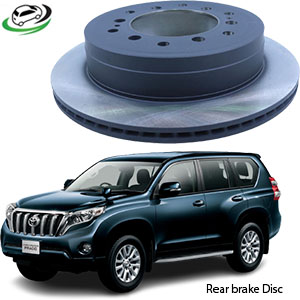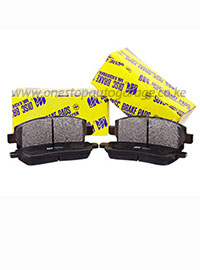-11%
Find the best Prices for Front Control Arm Toyota Passo in Nairobi, Kenya
Introduction:
Within the intricate web of a vehicle’s suspension system lies a fundamental component known as the control arm. Also referred to as an A-arm or wishbone, this seemingly simple yet crucial part plays a pivotal role in maintaining stability, control, and comfort during the drive. In this comprehensive guide, we will delve into the functions, types, and importance of control arms in vehicle suspension, shedding light on their impact on ride quality and overall driving experience.
Control Arm Functions:
- Suspension Attachment: The primary function of a control arm is to serve as a link between the suspension system and the vehicle’s frame or chassis. Control arms are strategically positioned to connect the wheel hub and steering knuckle to the vehicle’s frame, providing support and allowing vertical movement of the wheel assembly.
- Wheel Movement Control: Control arms play a critical role in controlling the movement of the wheels. By acting as a pivot point, control arms ensure that the wheels move in a predetermined arc when the vehicle encounters bumps, potholes, or uneven road surfaces. This controlled movement helps maintain tire contact with the road, ensuring optimal traction and handling.
- Alignment Maintenance: Control arms contribute significantly to maintaining proper wheel alignment. They are designed to absorb and distribute the forces generated during acceleration, braking, and cornering. This helps prevent misalignment of the wheels, ensuring that they remain parallel to each other and perpendicular to the road surface for stable handling.
- Shock Absorption: Control arms work in conjunction with other suspension components, such as shock absorbers or struts, to absorb shocks and vibrations from the road. This collaboration ensures a smoother ride by minimizing the impact of uneven surfaces and irregularities on the vehicle’s occupants.
- Stability and Handling: The geometry of control arms is carefully designed to contribute to the stability and handling characteristics of the vehicle. Properly functioning control arms help distribute weight evenly across the tires, promoting balanced handling and steering responsiveness.
Types of Control Arms:
- Upper and Lower Control Arms: In many vehicles, the suspension system incorporates both upper and lower control arms. The upper control arm connects the upper part of the steering knuckle to the frame, while the lower control arm connects the lower part of the steering knuckle to the frame. This dual-arm configuration enhances stability and control.
- MacPherson Strut Systems: Some vehicles use a MacPherson strut system, where a single control arm is integrated with a strut, simplifying the suspension design. The control arm in these systems acts as a link between the wheel hub and the vehicle’s frame while housing the strut for vertical support.
- Wishbone Control Arms: Wishbone control arms, also known as double-wishbone or multi-link suspension systems, feature two arms resembling a wishbone shape. This design provides enhanced control over wheel movement and allows for greater customization of suspension geometry, contributing to improved handling and ride quality.
Importance of Control Arms:
- Safety and Stability: Control arms are integral to the safety and stability of a vehicle. They play a vital role in maintaining proper wheel alignment, distributing forces evenly, and controlling wheel movement. A properly functioning control arm contributes to stable handling and reduces the risk of accidents, especially during sudden maneuvers.
- Ride Quality: The design and condition of control arms directly impact ride quality. Well-maintained control arms contribute to a smoother and more comfortable ride by effectively absorbing shocks and vibrations. This is particularly crucial for long-distance driving and passenger comfort.
- Steering Responsiveness: Control arms influence steering responsiveness and handling characteristics. Properly aligned and functioning control arms ensure that the wheels respond predictably to steering inputs, enhancing overall driving control and maneuverability.
- Tire Wear and Performance: Control arms contribute to even tire wear by maintaining proper wheel alignment. Misaligned wheels due to worn or damaged control arms can lead to irregular tire wear, reducing tire lifespan and compromising overall performance.
Conclusion:
In the intricate dance of a vehicle’s suspension system, control arms emerge as unsung heroes, silently working to maintain stability, control, and comfort. Their functions, from supporting the suspension system to controlling wheel movement and enhancing ride quality, are paramount to the overall driving experience. Drivers and automotive enthusiasts alike should recognize the importance of control arms in ensuring safety, stability, and optimal performance on the road. Regular inspections and timely replacement of worn control arms contribute to the longevity of a vehicle’s suspension system and the enjoyment of a smooth, controlled, and responsive ride.





